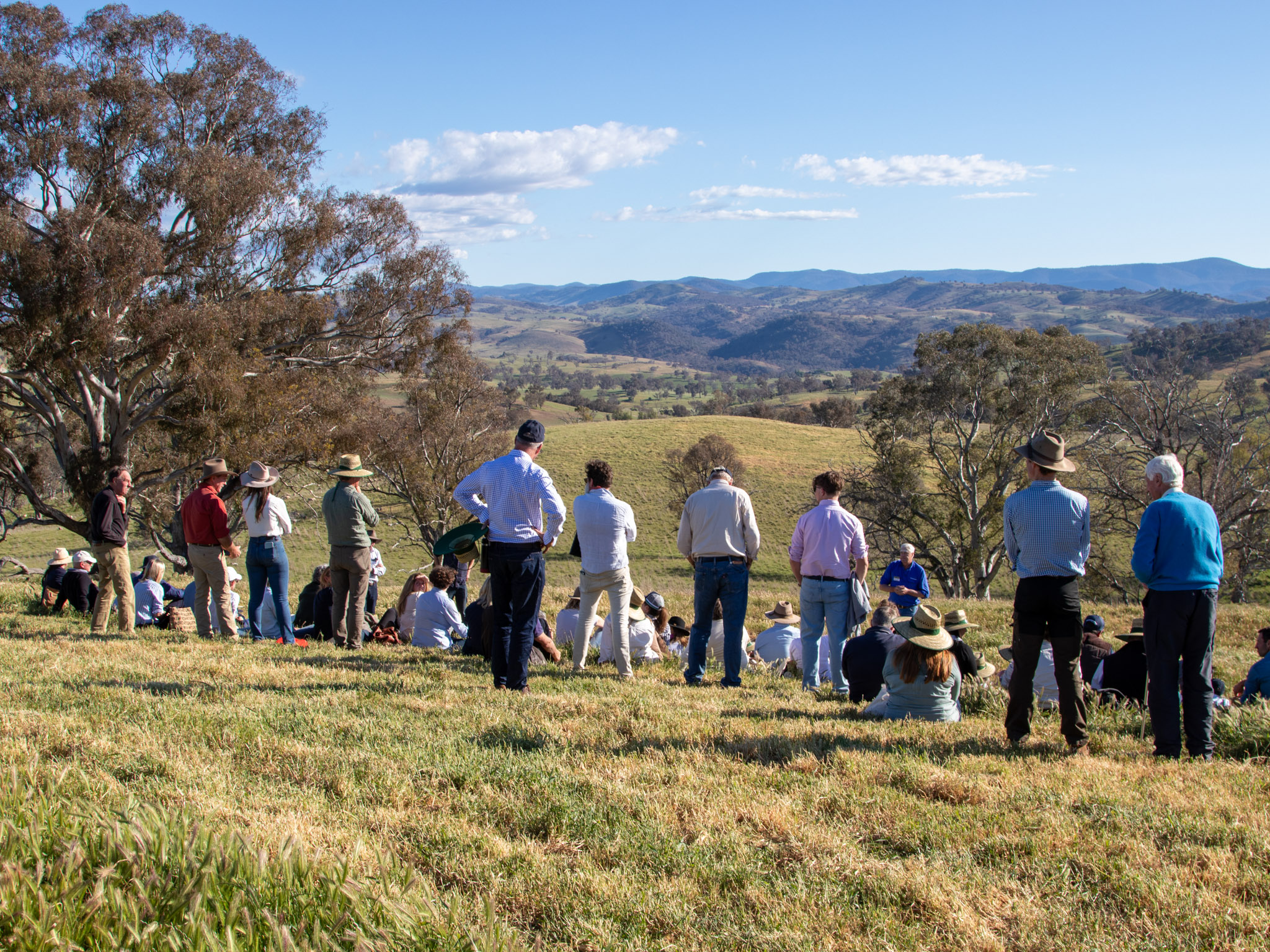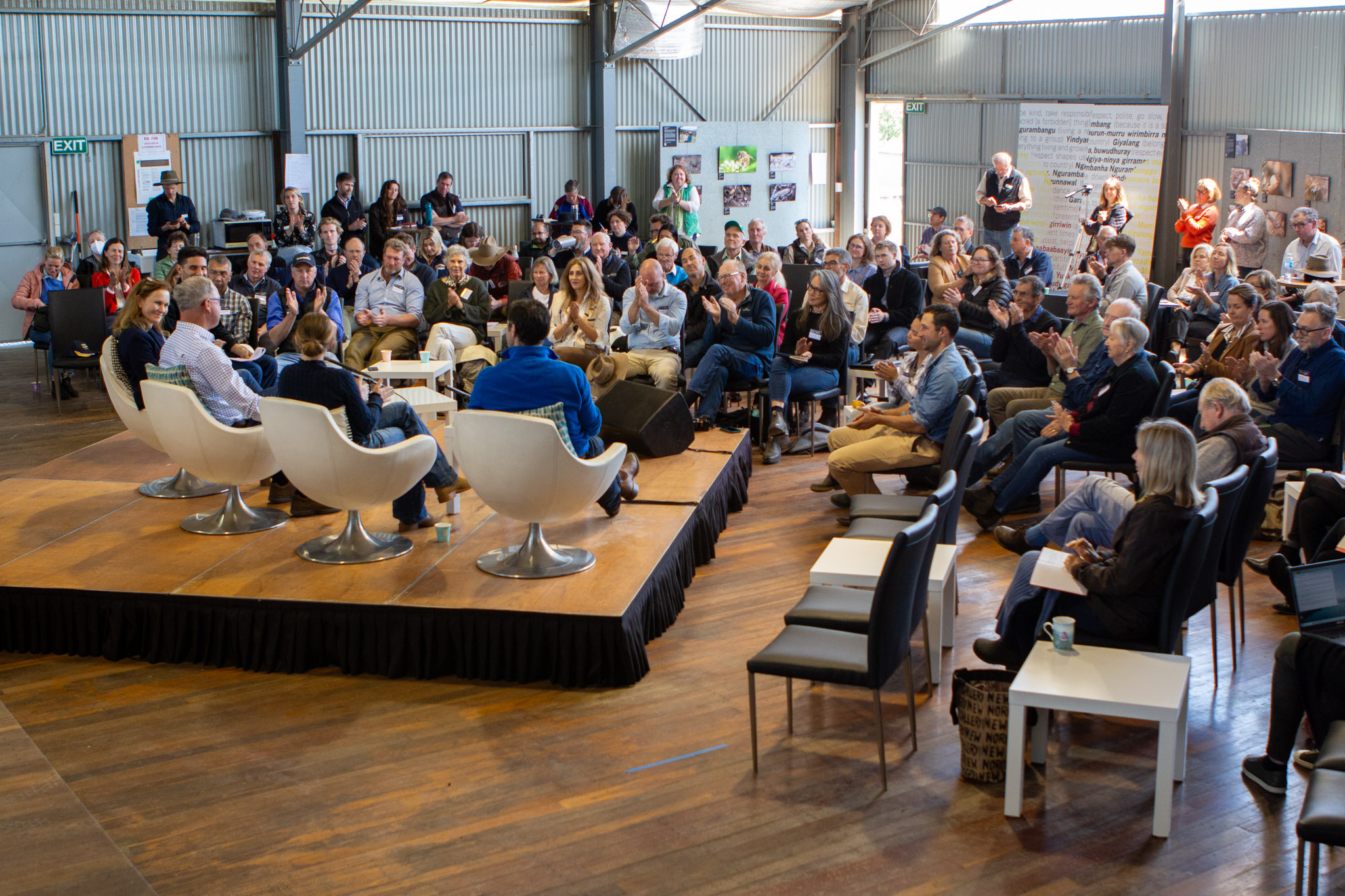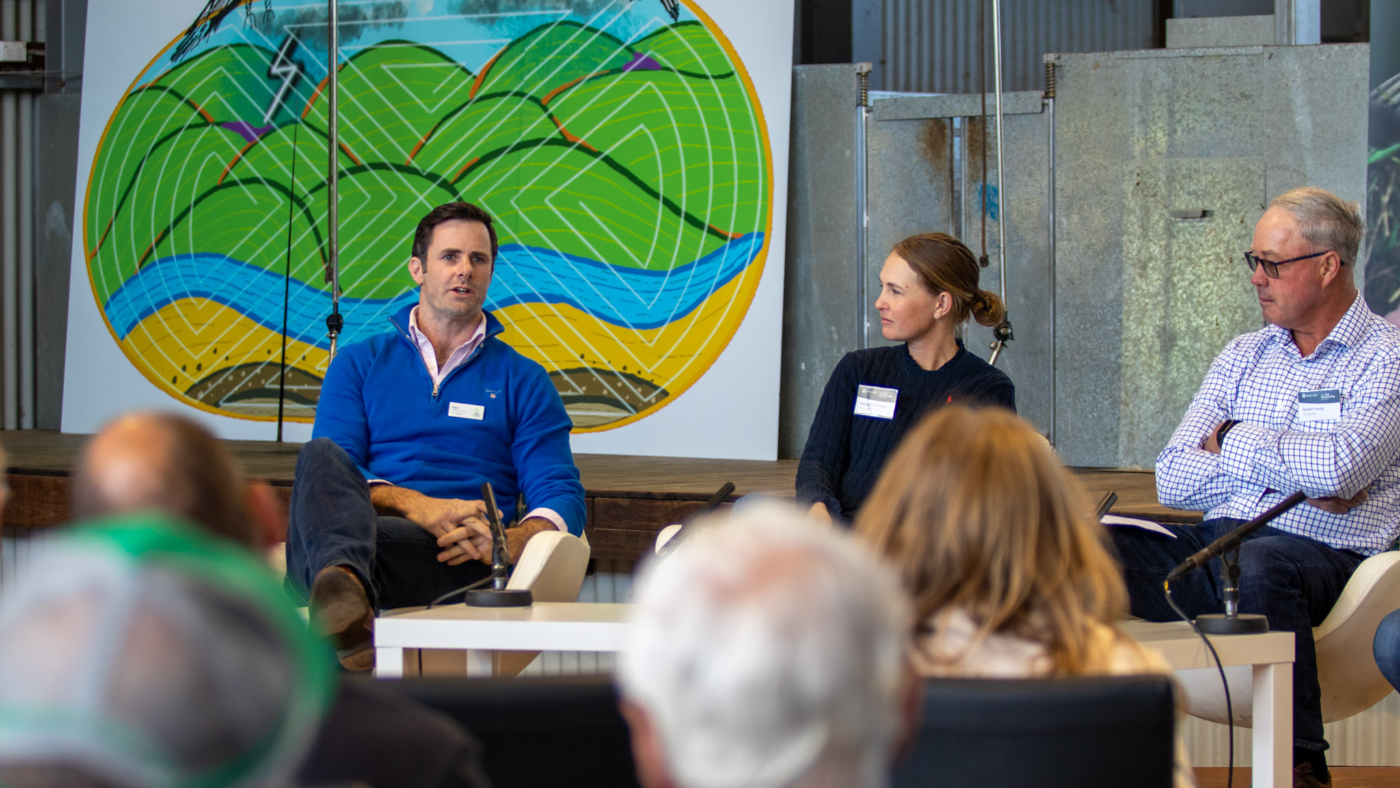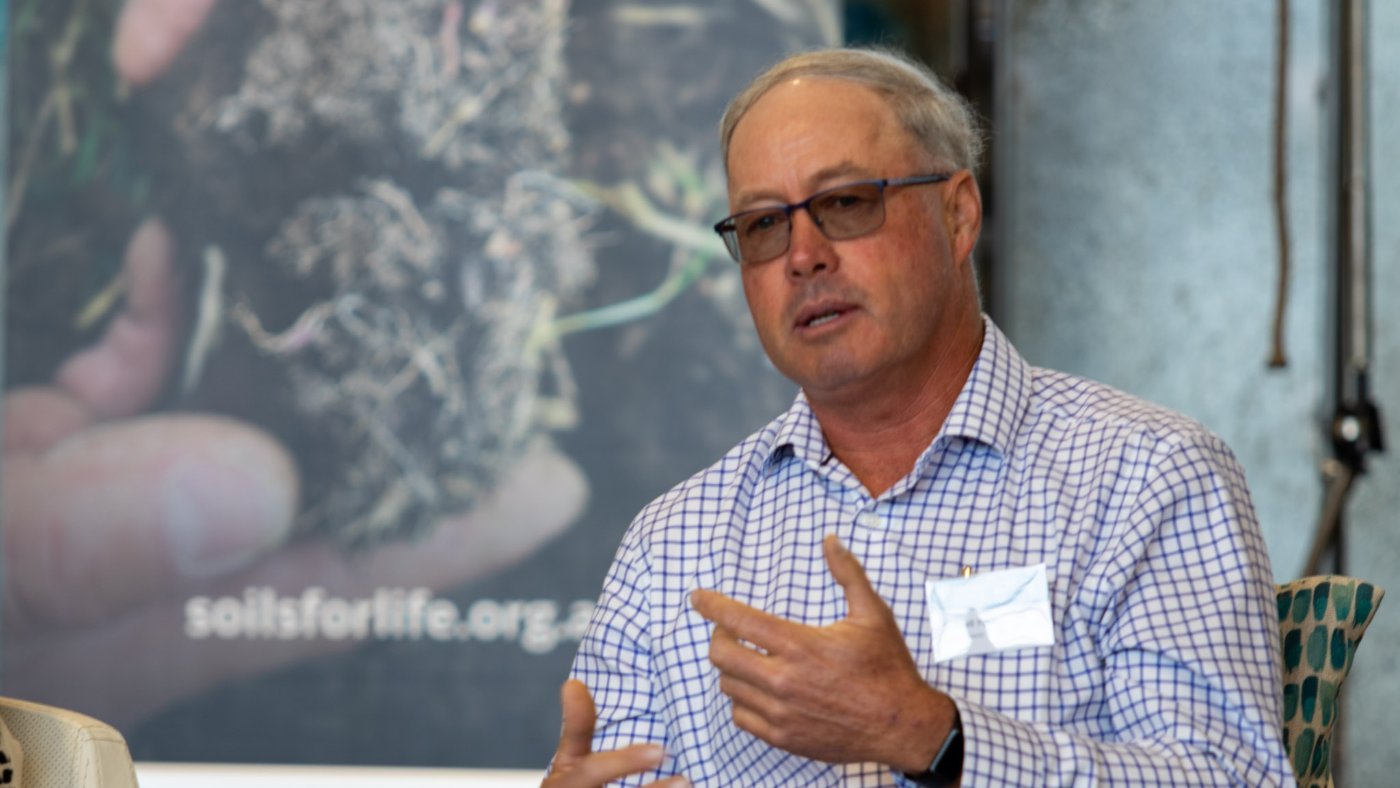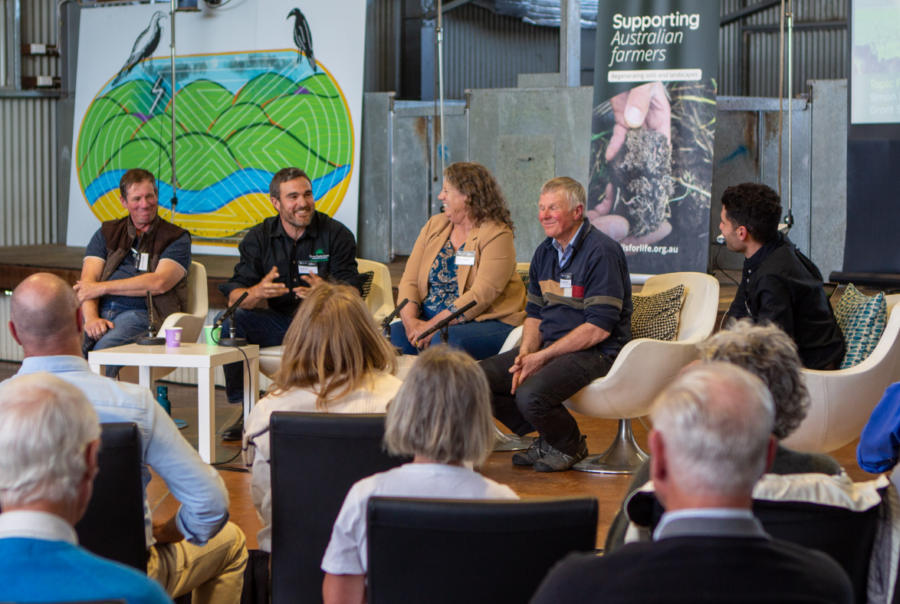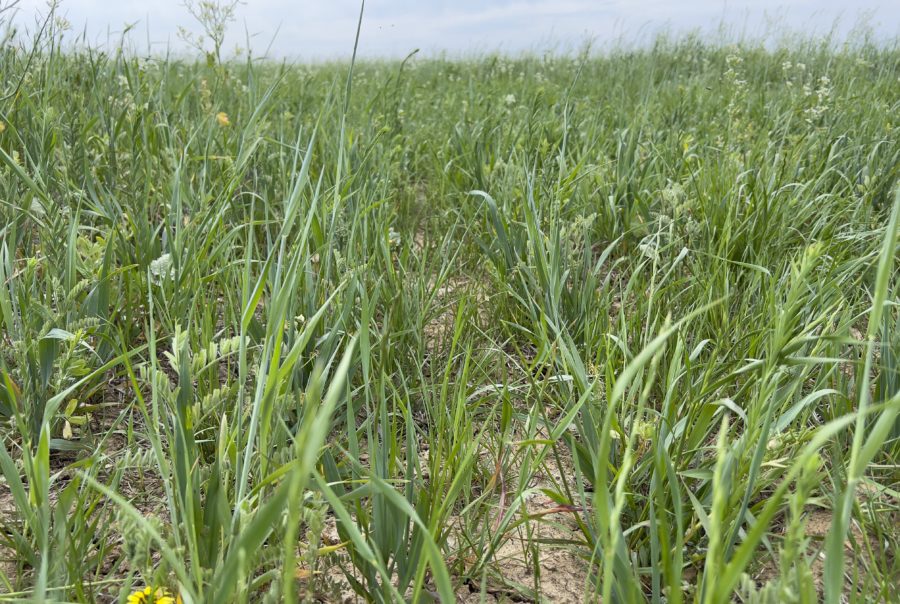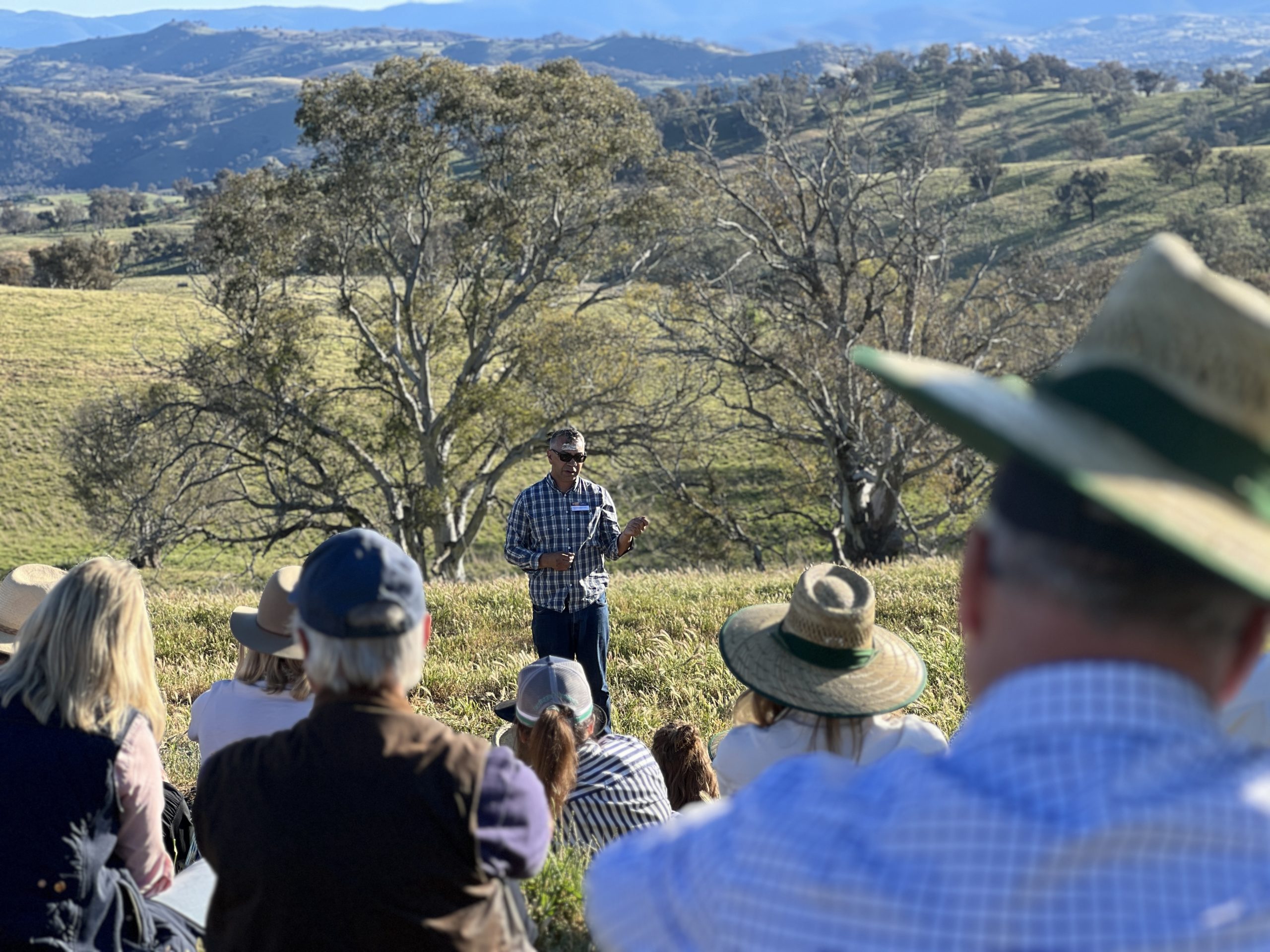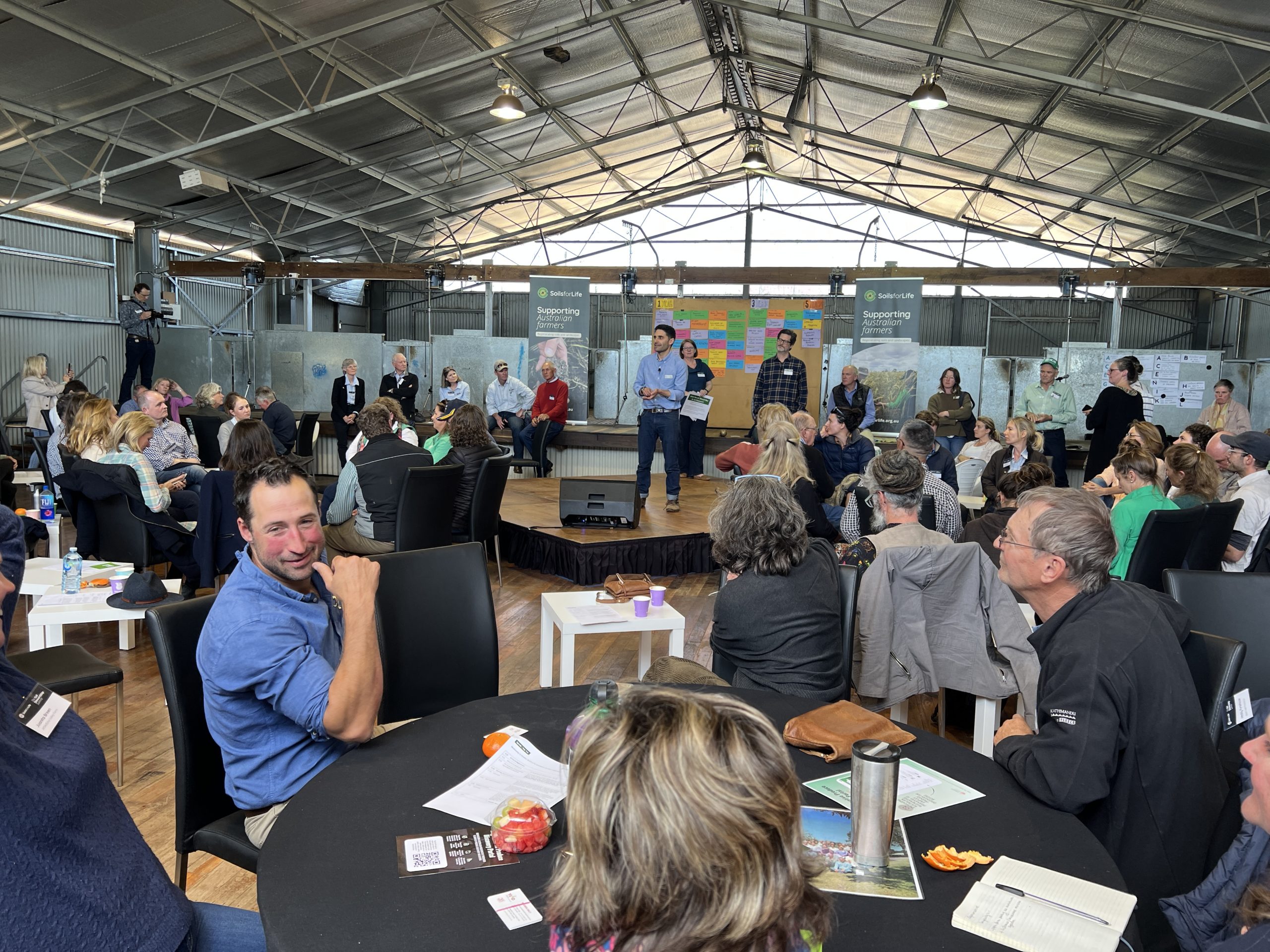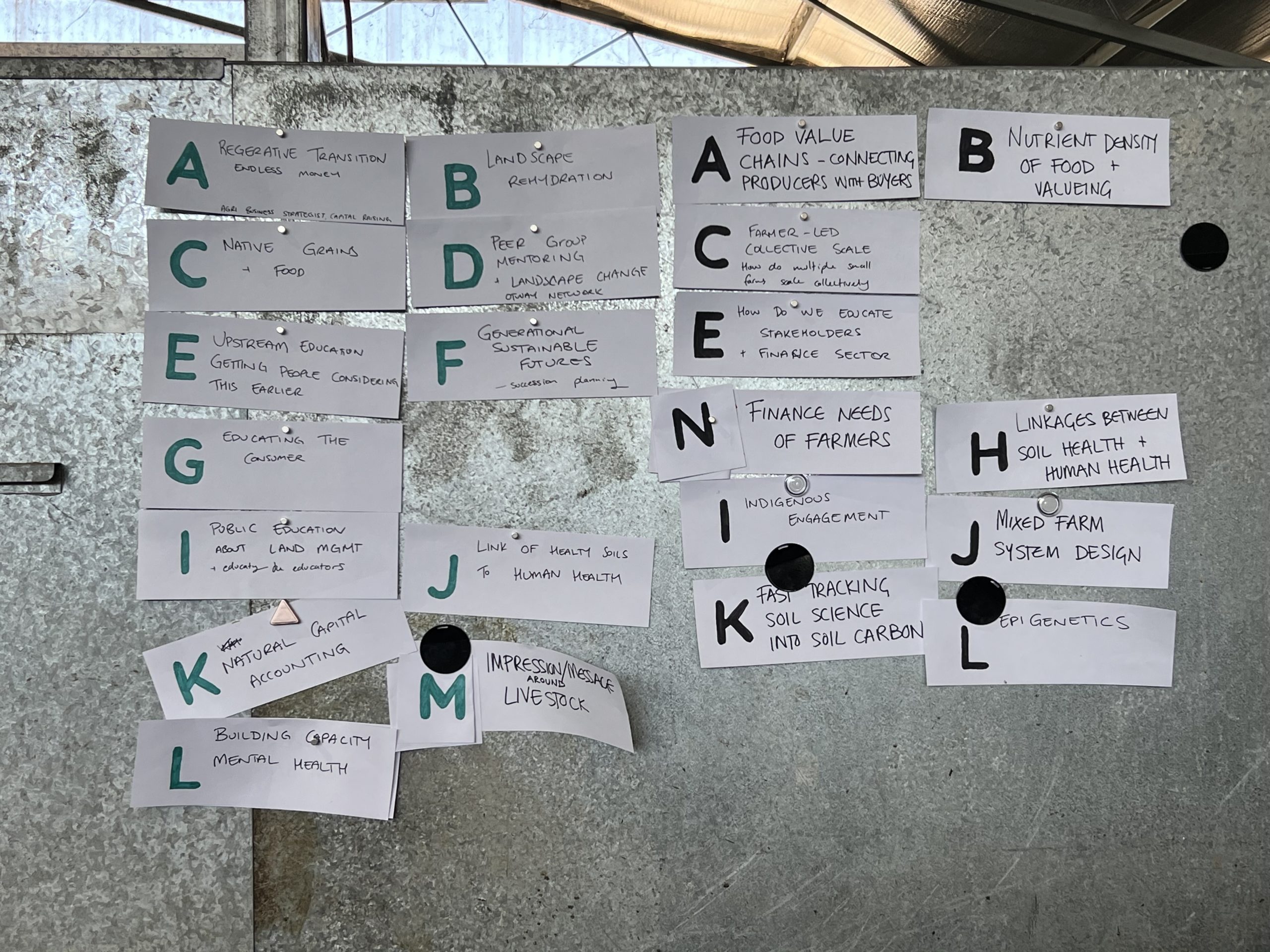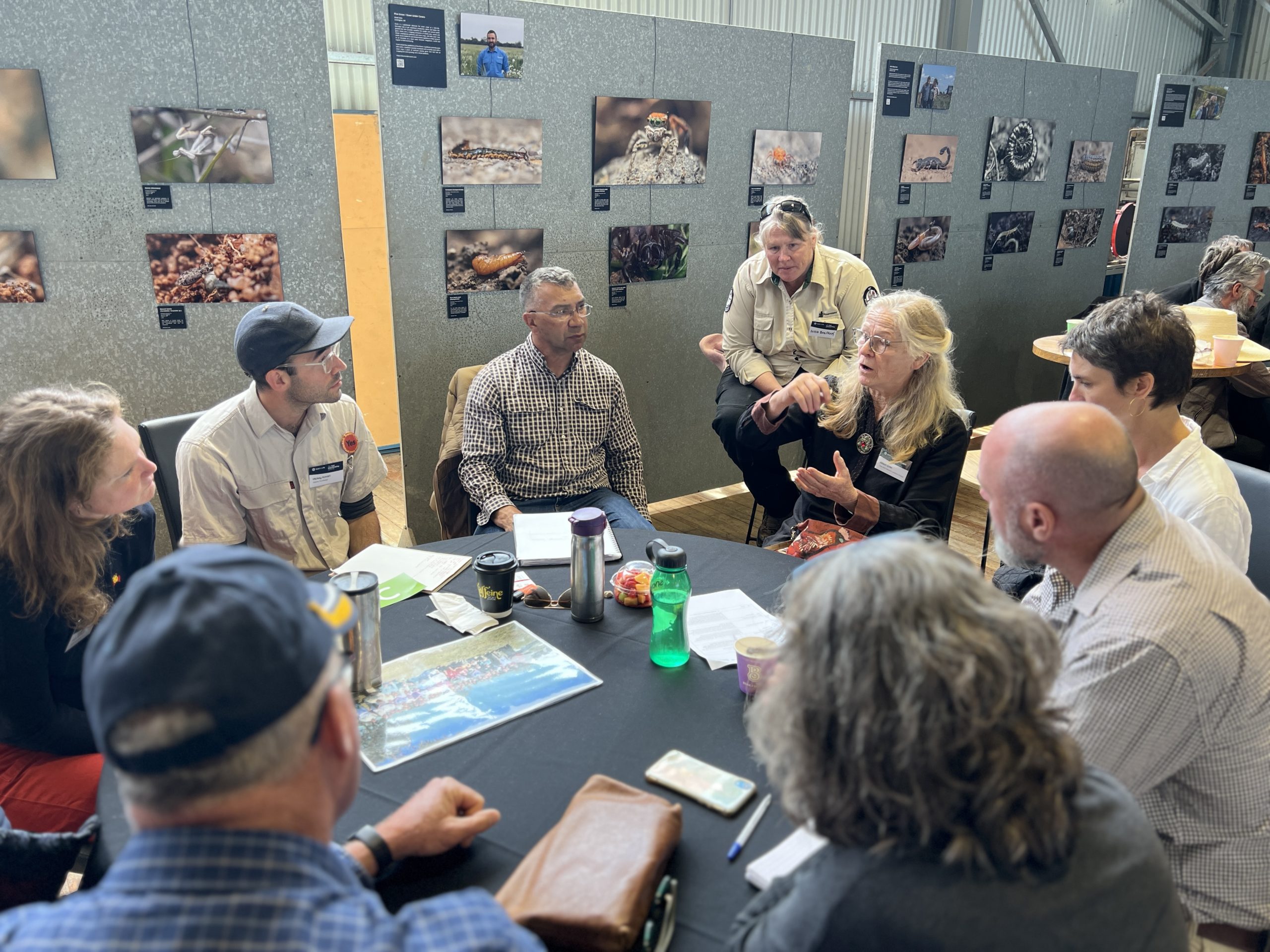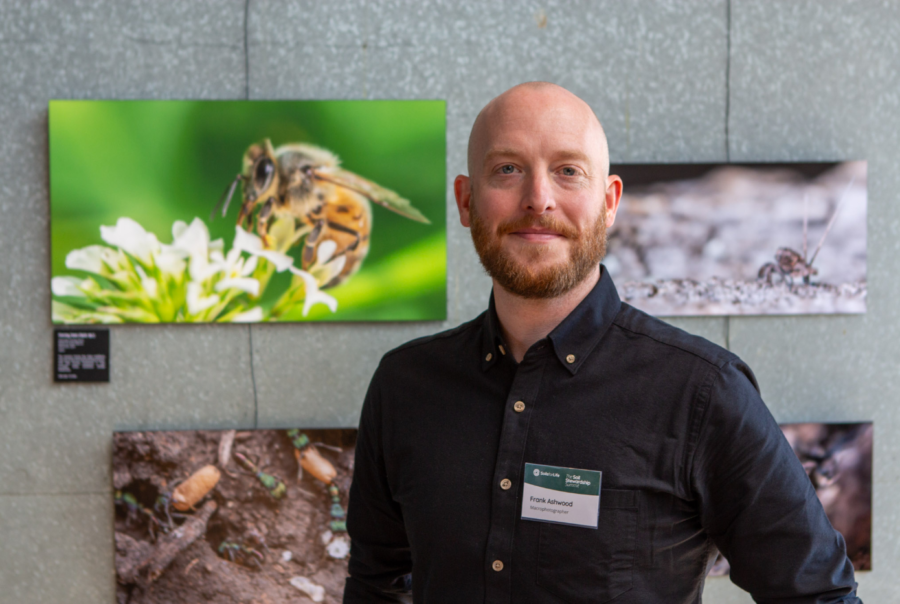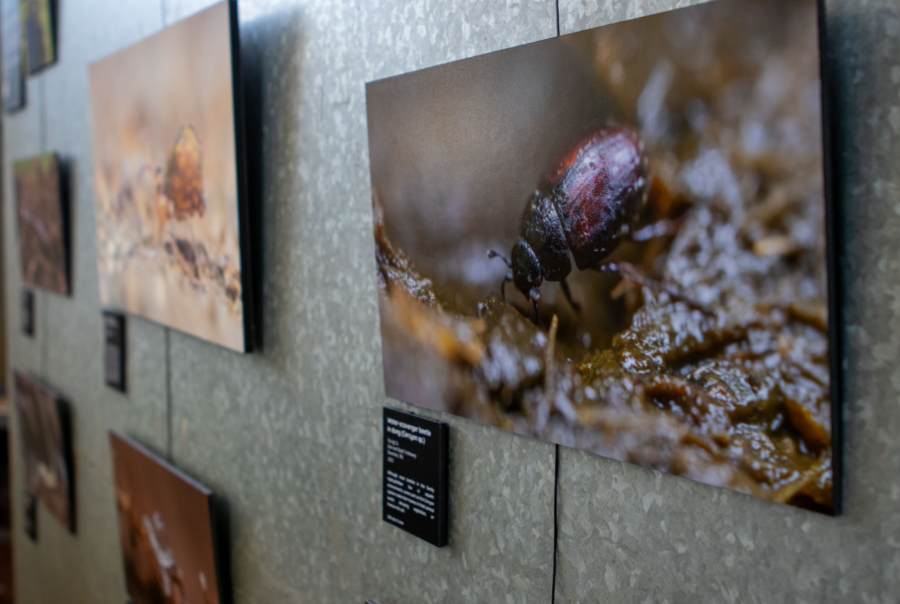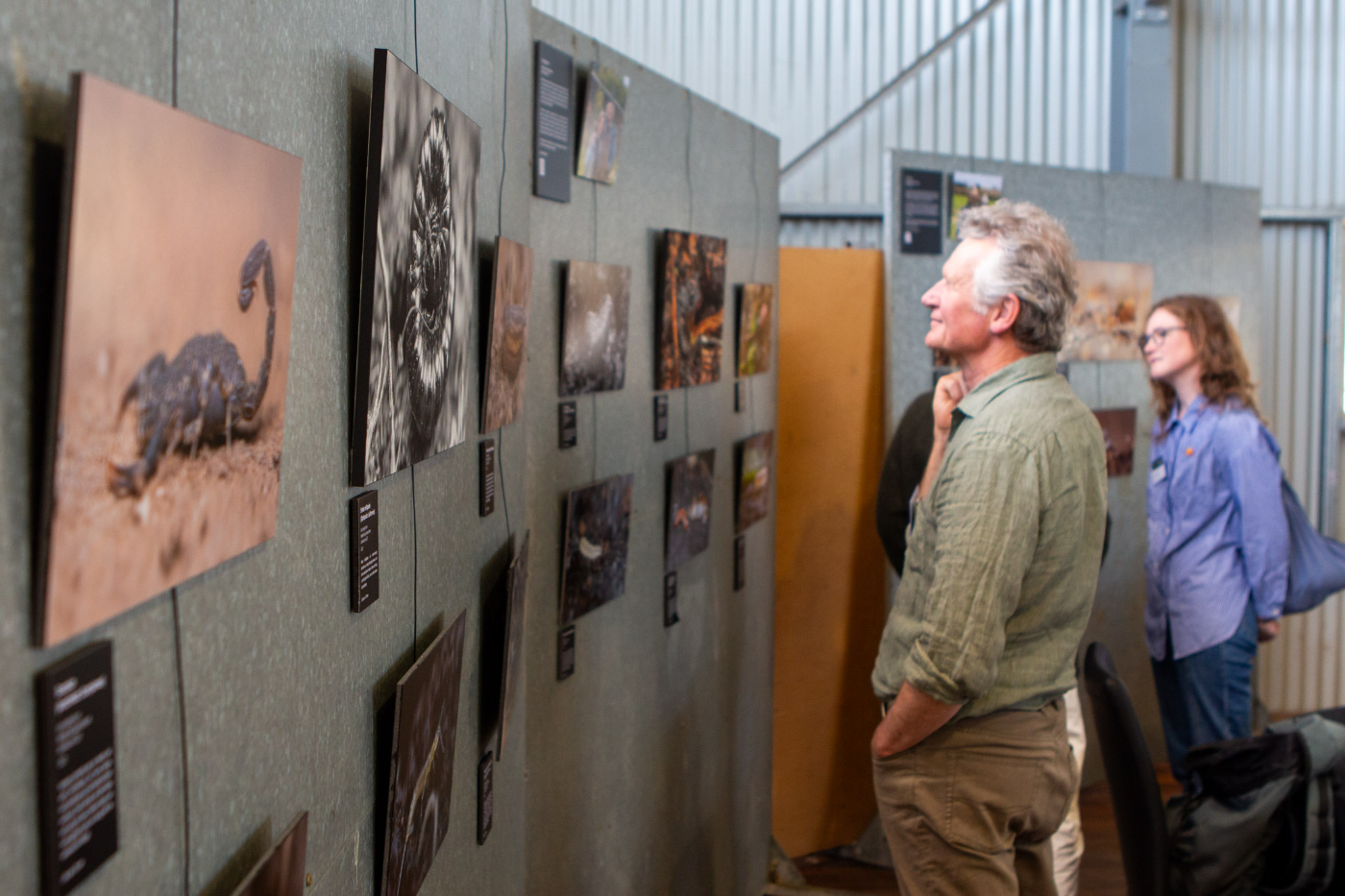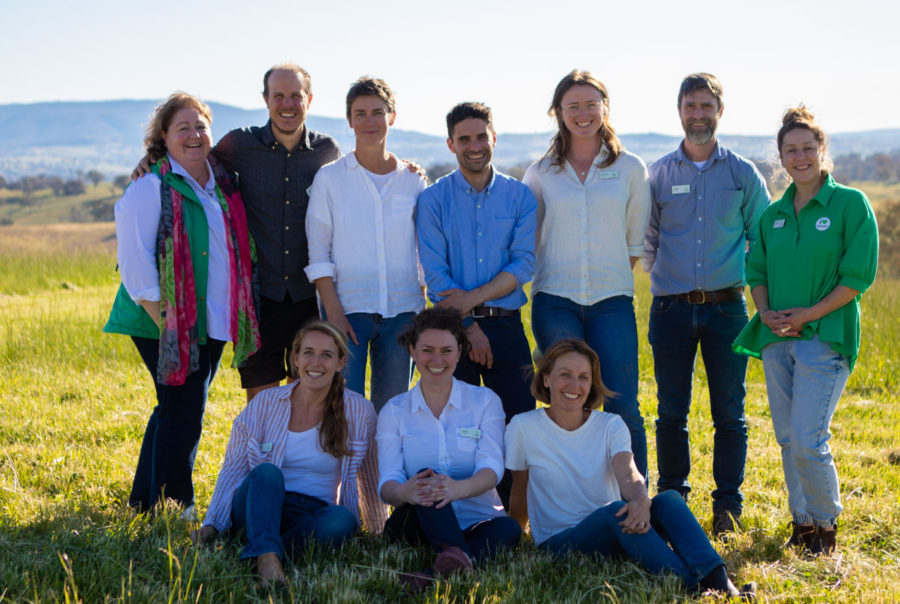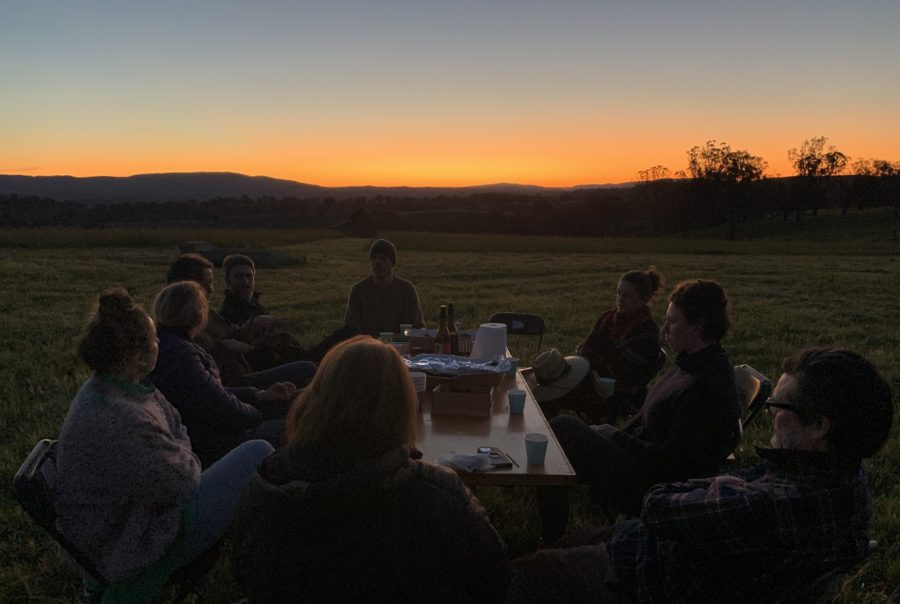The Soil Stewardship Summit
Inspiration, connection and renewed commitment for the years ahead
Read on to find out more about the ideas and insights that came out of this special event, and subscribe to our newsletter to keep up to date with all things soil and regenerative agriculture.
Thank you
A huge thank you to our amazing case study farmers. Without you, we couldn’t do what we do. We firmly believe in the power of farmers learning from other farmers, and aim to put your knowledge and experience front and centre in everything we do.
And to our wonderful event partners, Sustainable Table, Open Food Network, ACT NRM, the Soil CRC, RCS, NRM Regions and the Yass Area Landcare Network. And Matt Crozier for welcoming us to Cavan Station and letting us take over the woolshed!
Day 1 Looking back
Origins: Celebrating our collective achievements, sharing what we’ve learned
We’ve come a long, long way since Soils for Life was founded just over a decade ago, by the formidable force of nature that was Major General Michael Jeffery. Soil is now recognised as an issue of national significance, something he tirelessly advocated for. And regenerative agriculture has moved from the fringes to mainstream awareness. These achievements are the legacy of the many farmers who were early adopters of regenerative approaches to agriculture, including the more than 50 Soils for Life case study farmers, of whom more than 40 attended the Summit.
Our first discussion at the event was kick-started by a panel comprising David Marsh, Rhonda Daly, Colin Seis and Garry Kadwell. Each shared how their journey started, and how their practices, their thinking and their landscapes have changed.
“The natural trend of evolution is to elaborate and diversify… But ‘conventional’ agricultural management leads to simplified communities with poor resilience. That’s the challenge. To produce more diverse communities, not the opposite… Increasing diversity adds to landscape resilience which adds to people resilience.”
– David Marsh, Allendale
“We changed our fertility and our management strategies… And we started to see change. Within 6-12 months our soils were starting to respond to what we were doing… When you’re in a drought you’re in a drought, but biological farmers go into the drought slower and usually respond a lot quicker.”
– Rhonda Daly, Milgadara
“I knew that if I started following natural systems, it had to work, it couldn’t fail. If you follow natural principles, the blueprint is already written. The business model is lower risk, with lower inputs, and greater options and flexibility.”
– Colin Seis, Winona
“Our fallen timber looks a mess but it’s absolutely beautiful… Our soil is our foundation. Everything flows from that initial point”
– Garry Kadwell, Kadwell & Co
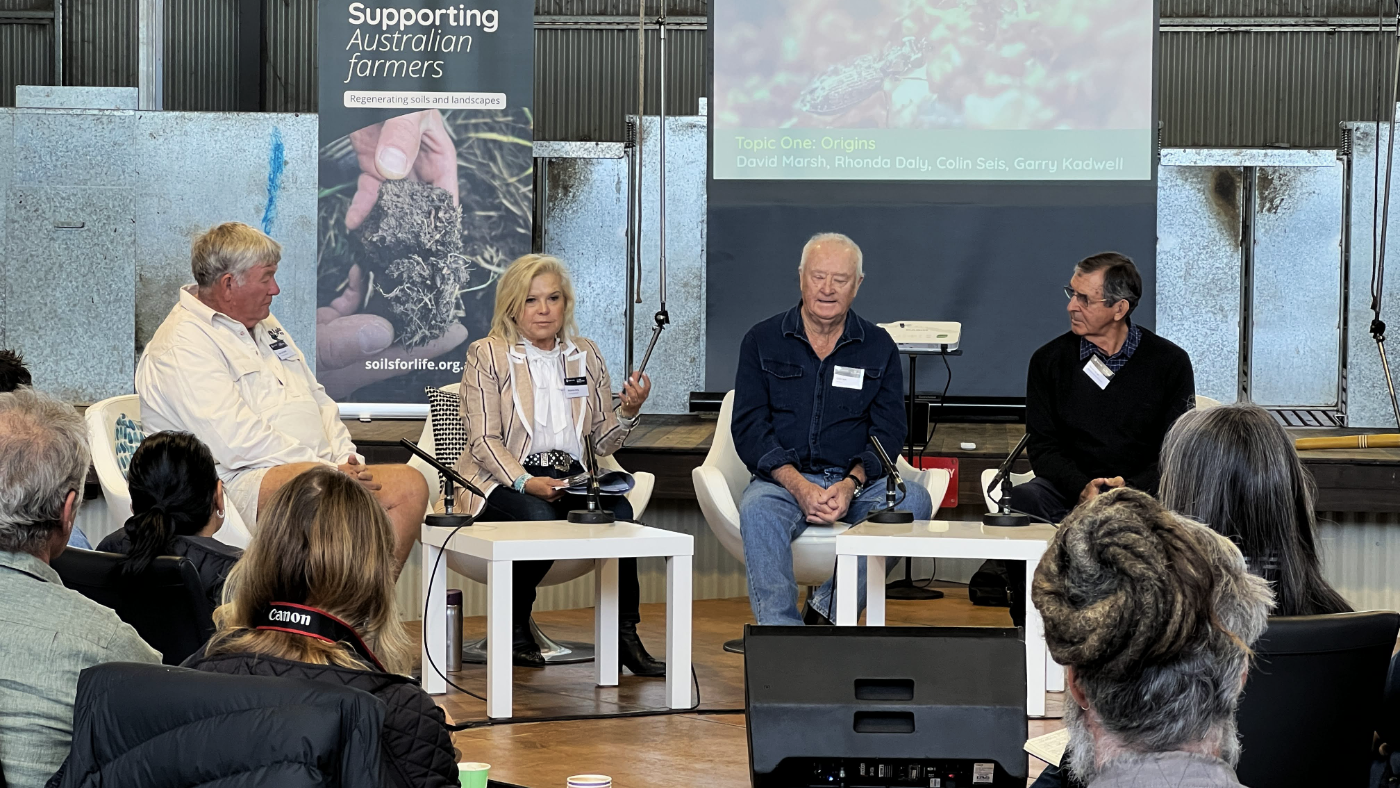
(R-L) David Marsh, Colin Seis, Rhonda Daly and Gary Kadwell in a panel discussion.
Shifting mindsets: Experimentation, observation and humility
We could talk all day about practices, and the reality is that every farm is different, and different practices will be needed depending on each unique context. But what we’ve seen through our case studies over the past decade is that adopting a mindset of experimentation, observing the results, and having the humility and openness to recognise mistakes and learn from them, is often the critical factor.
This discussion was kicked off by four producers who are newer to regenerative agriculture: Maddy Pursehouse, Sam Trethewey, Rebecca Gorman, and Russell Young. Each shared how their mindsets have been shifting as they’ve been working to adopt a different approach to farming.
‘We had absolute tunnel vision on carbon… We took a fairly high input approach… I was convinced I was going to regenerate the landscape, but… The more I pushed, the bigger the problems became… I had a penny drop moment – you have to get out of nature’s way… You’ve got to earn the right to take the place and animals off the inputs…’
– Sam Trethewey, Tas Ag Co
‘I’ve found the Holistic Management decision making framework to be a godsend, helping to find the root cause of a problem and then trying to decide which solution to use… It doesn’t mean that you don’t make mistakes, it just means you are aware of them sooner. It builds making mistakes and learning from them into the decision making framework.’
– Rebecca Gorman, Yabtree West
‘I guess because I’m not a generational farmer it really just was a lot easier for me to think outside the box and ask questions, and question what we do on the farm and I guess it made me open to looking at different ideas.’
– Maddy Pursehouse, Black Creek Pastoral
‘My grandfather bought the property in the 50s, and at that point there were no inputs. He was able to grow as good a crop as we could today, but within ten years he was using inputs… I can’t be critical of him, but we need to change now. I don’t like chemicals, being tied into an industry that could change our cost basis… We have messed with the things in our business that we can afford to mess with, but we’re not going to take out of our system things that make us financially viable. Hopefully over time that allows us to take out the bigger inputs into the system.’
– Russell Young, Young Seeds
It’s not just for weirdos (but weirdos innovate!)
We had a lengthy discussion, prompted by a question from Gabrielle Chan of The Guardian, about whether regenerative agriculture was just for ‘weirdos’. Over the past few decades, regenerative agriculture has been in an innovation phase. As with most innovations, the early pioneers and early adopters do tend to be a bit different, because innovating requires stepping outside the accepted way of doing things. But now we’re entering a new phase, where the mainstream is starting to become interested. This new phase requires new approaches.
‘I knew exactly what I wanted to do, and have been practising for the last 29 years… I call it common sense farming, doing what we should be doing. Whether that’s weird or not, I don’t know.’
– Bryan Ward, Illawong
‘Humans will do more to avoid a loss than to win a gain. We might be moving into a new stage as more people get on board. How can we promote a feeling that people will lose their place in the community if they don’t hop on board?’
– Trevor Crook, RCS
‘There’s an optimistic reason to change… We operate in the only sector that has multiple solutions to the climate crisis which are also part of the mental health crisis solution, biodiversity repair, human health, etc. Just this one shift can attend to all of those issues… We are standing on the solution’.’
– Rebecca Gorman, Yabtree West
‘This reminds me of the earliest days in green finance… In the early days [of global climate summits], I was abused as being the only banker there. The environment was going to be cared for by philanthropy. Now it’s wall to wall bankers.’
– Mark Burrows, Sugarloaf Pastoral Investments
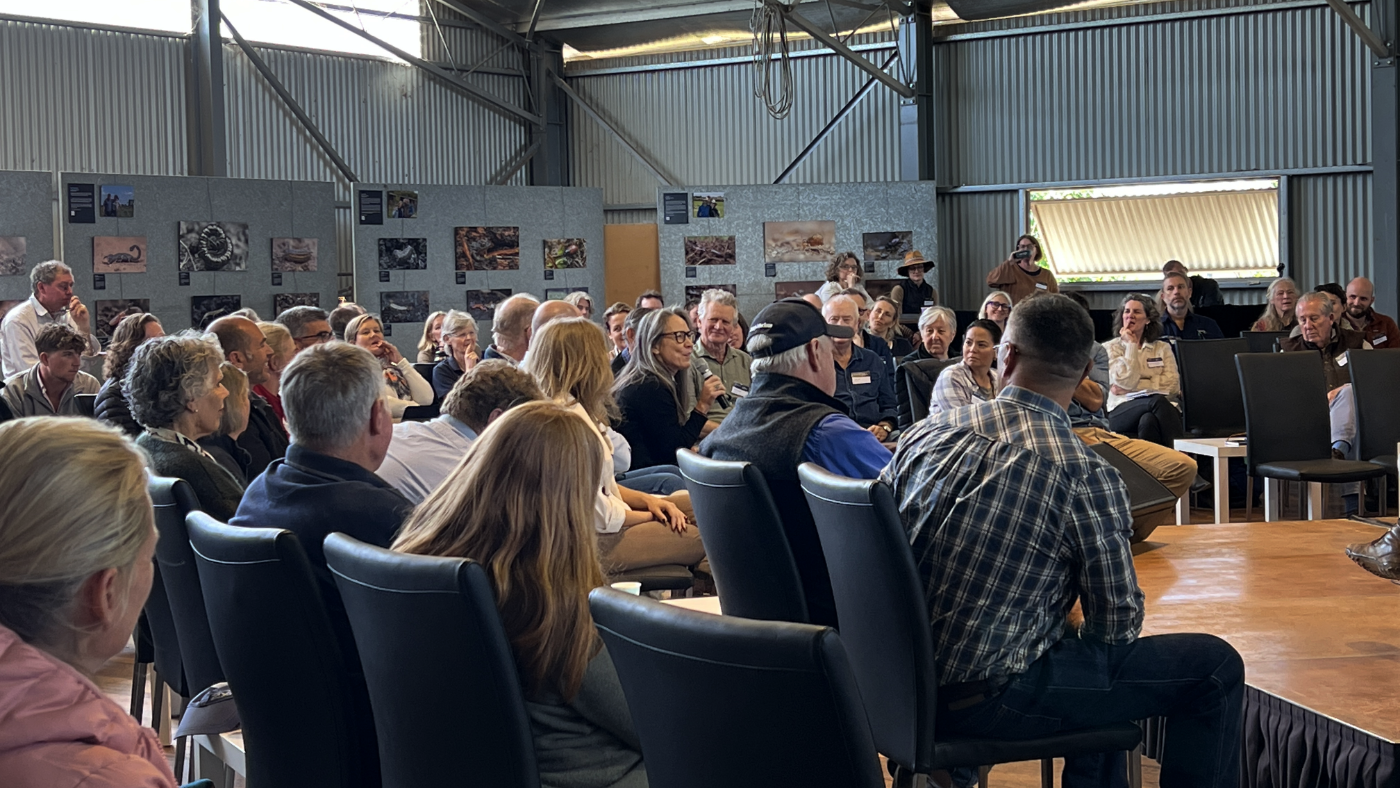
Gabrielle Chan of The Guardian poses a question to the summit.
The next cohort: Supporting the next wave of soil stewards
After lunch, we turned our attention to ‘the next cohort’, those curious and interested farmers who are now looking to become better soil stewards, but need support to get going, or to keep going. Our panel talked about the thing that helped them when they were getting started, and what they find most useful as they navigate all the challenges they encounter. A strong theme from the discussions was the value and importance of getting involved with like-minded farmer-to-farmer groups for learning and support. Our panel included Nick Austin, Luke Winder, Sarah Whinney and Harriet Finlayson.
‘You do a course and it’s life changing and then you get thrown out into the world… Being part of the ‘8 Families’ group means that you’re not alone, and you’ve got that confidence and support, and trust… Peer group learning helps us keep evolving.’
– Nick Austin, Mundarlo Pastoral
‘At our field day there were a lot of women who came along without their husbands, and I think that women are quite important in this space.’
– Sarah Whinney, Chatsworth House Pastoral
‘I had a marketing advantage being the only person with chickens in the rangelands… Women are the ones wanting to feed their families nutrient dense food, from places that are not anonymous, and that are transparent, and in our region they aren’t able to do that’
– Harriet Finlayson, Bokhara Plains
‘The model needs to change. Currently the farmer takes on all the debt and all the worry. If that’s going to be safe for future generations, someone else needs to share the food chain risk. There’s a certain area of the food chain taking a lot of money, but the one who is producing the food is not getting any money.’
– Luke Winder, Tathra Place Free Range
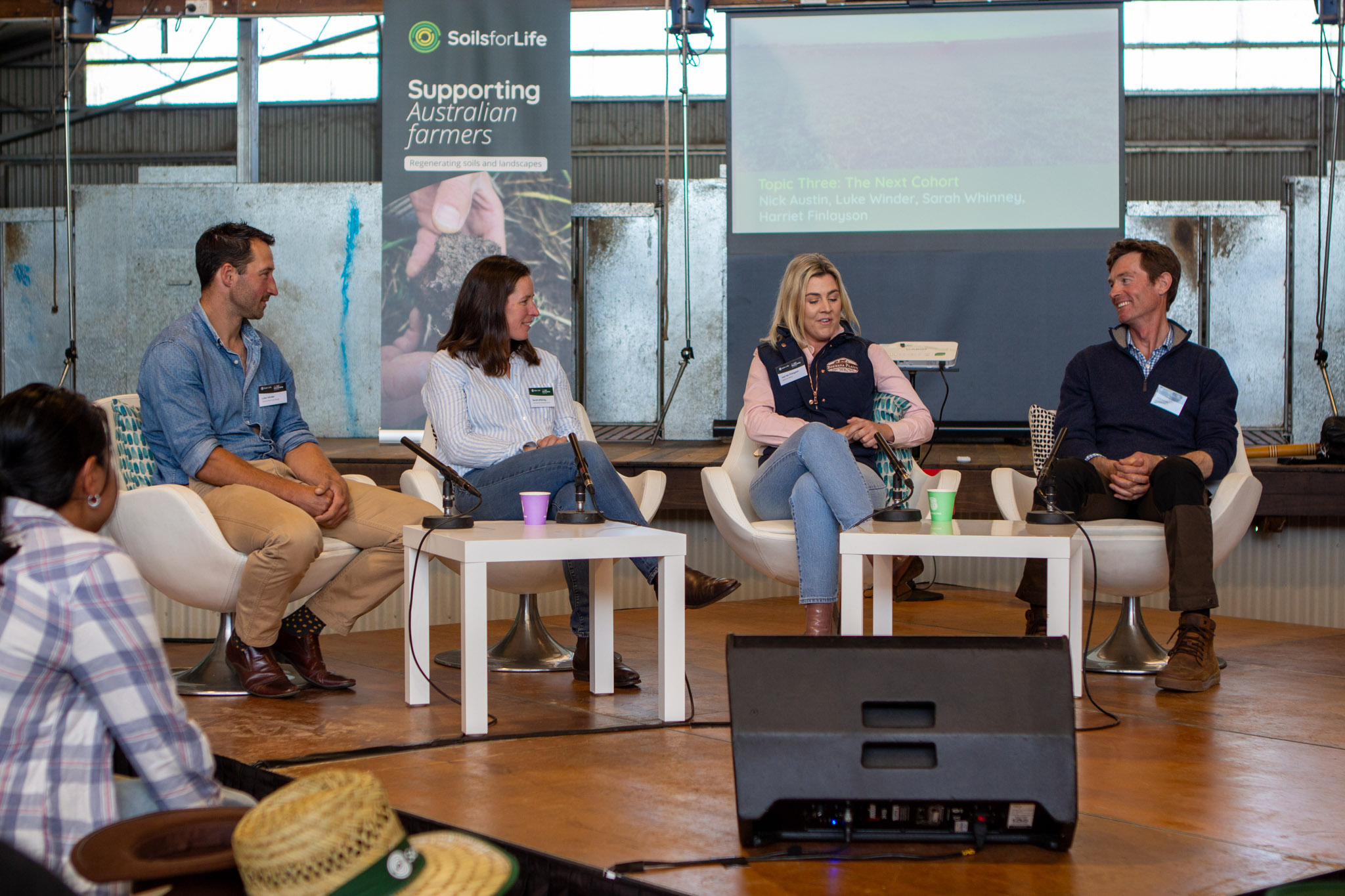
(R-L) Nick Austin, Harriet Finlayson, Sarah Whinney and Luke Winder
Regenerative cropping: The new frontier
Many of the most widely shared examples of regenerative agriculture are grazing enterprises, often in higher rainfall areas. Soils for Life is currently increasing our focus on cropping, and the next session at the Summit focused on the unique challenges facing regenerative cropping. Our panel included Simon Mattson, Di Haggerty, Rob Hetherington and Grant Sims.
‘When growing a crop, it is a higher order plant, it takes more energy and nutrition to get it going. Pasture is more forgiving in that sense, it doesn’t require as much energy.’
– Rob Hetherington, Walma
‘There are windows of opportunity within any agricultural enterprise… If there was one thing that stood out from my Nuffield Scholarship, it was plant diversity. That idea of plant diversity is applicable to everyone in the room regardless of their enterprise. But I need to make money out of that other plant diversity.’
– Simon Mattson, Soil Land Food
‘Diversity in the roots allows access to greater areas of soil, making us more efficient in accessing and sharing of nutrients and moisture. That all happens through fungal associations. Most things we do kill or suppress fungi. It is the thing that connects all of the roots. The two most detrimental -cides are fungicide and insecticide. I think they are the two easiest to get rid of, if we manage nutrition and biodiversity.’
– Grant Sims, Pine Grove / Down Under Covers
‘We got interested in how can we get the microbial system working best… We didn’t know it would be so effective, but it has been amazing to build immune function throughout the system. Normal problems dissipated fairly rapidly with the ability of that plant to resist disease and insect pressure. Not having to deal with these issues enables more time to be out in the landscape and observing things. We’re not having to chase our tails.’
– Di Haggerty, Prospect Pastoral
Rob Hetherington posed the question to the panel about animal integration into cropping systems, and whether it would be possible to make do with the ‘below ground livestock’ even without ‘above ground livestock’. Grant and Di both commented on the value of integrating livestock into their systems.
‘“Well integrated livestock can be the key to unlock and prime that plant’s ability to pump carbon… I love multi-species and animal integration. In cropping you’re always spending money and if the soil has a problem the solution for fixing it is spending more money again. But when we have animals and high plant diversity, we see that we don’t need to spend as much. We minimise our chemical usage and also our costs while growing large amounts of biomass, improving our soils. Animals are a tool that we use very very well. ’
Grant Sims, Pine Grove / Down Under Covers‘‘When talking about landscape and scale, [livestock] are another tool to take out the manpower. Increasing diversity with gut and plants, they are doing all of that work for you, transferring both nutrients and microbes around the landscape to the soil.
Di Haggerty, Prospect Pastoral
Towards the end of the session, Matthew Evans – referencing his experience as a chef – asked whether there were particular crops that croppers want to grow to regenerate the landscape and build diversity into their systems, but need more demand from people wanting to eat them. People talked about the benefits of hemp, buckwheat, rye, oats, soy and native grains, all of which can be beneficial for regeneration (and more), but which currently are in low demand.
Yindyamarra
Respect, polite, go slow, be kind, take responsibility
We ended the day sitting in a paddock with a beautiful view of rolling hills and the setting sun. Station Manager Matt Crozier talked about the current management and future plans for Cavan Station. And Ngambri custodian Paul Girrawah House shared the Indigenous heritage and language of the landscape, and conducted a smoking ceremony.
Many people were struck by the explanation of ‘Yindyamarra’, a central concept in Indigenous culture which can be translated as respect, but also being polite, going slow, being kind and taking responsibility.
Day 2 Looking forward
On day two we shifted focus to the present, and the future. Our goal for the day was to build stronger foundations for future collaboration between farmers and organisations that work to support farmers to improve soil and landscape health.
Who’s doing what?
We started the day by building up a map of activities currently in progress or planned for the next few years, with presentations from event partners Sustainable Table, Open Food Network, ACT NRM, the Soil CRC, RCS and the Yass Area Landcare Network.
Open space discussions
We then moved into a series of ‘open space’ discussions, where participants could decide what they wanted to talk about, and with whom. We had two rounds of small group discussions, each one hosted by a volunteer from amongst the Summit participants, on a topic of their choosing. Our goal was to provide a space for people to discuss the topics they’re working on, to improve their ideas, discover new opportunities and collaborators, and build their confidence to pursue their plans in the years ahead. More than 20 topics were covered across the two rounds, including:
- Understanding farmers’ needs for finance
- Investing in regenerative transitions
- Valuing the nutrient density of food
- Food value chains, and connecting eaters/buyers and producers
- Boosting regenerative agriculture in primary and secondary education
- Educating the educators about regenerative agriculture
- Consumer education
- Educating the finance sector
- Reshaping the message around livestock
- Understanding the link between soil health and human health and nutrition
- Fast-tracking soil science around soil carbon
- Native grains
- Indigenous engagement
- Natural capital accounting
- Mixed farm system design
- Epigenetics
- Landscape rehydration
- Opportunities for farmer-led collective scale
- Building capacity in farming communities to manage mental health
- Succession planning
- Peer group mentoring
Workshops on key initiatives
The last activity of the day involved two rounds of in-depth workshops on initiatives that are currently in progress:
- Regenerating investment in food and farming (run by Jade Miles and Tanya Massy of Sustainable Table). This workshop explored the new forms of capital required for systemic change in farming, building upon the Roadmap for Regenerating Investment in Food and Farming.
- Advocating for Federal Government policy to support regenerative food and farming (run by Serenity Hill of Open Food Network, with Maggie Wood and Rebecca Gorman). The workshop focused on ways to influence the adoption of holistic thinking in Federal Government policy development, and elevate the role of regenerative food and fibre and landscape management as the key tool for urgent action on climate change.
- Connecting with farmers on the cusp of change (run by James Diack and Courtney Young of Soils for Life). The focus of this workshop was on practical ways for organisations to best connect with and engage farmers.
- The Tipping Point for Regenerative Agriculture (run by Trevor Crook of RCS). This workshop explored the elements that are influencing adoption of regenerative agriculture, and looked at how to harness the positives and rein in the negatives.
- The future of soil research (run by Catherine Allen of the Soil CRC, and Justin Borevitz of ANU & Soils for Life). This workshop covered the current status, and future directions for soils research.
Revealing the hidden underground livestock
A highlight of the summit was our exhibition of Frank Ashwood’s glorious macro photographs of soil biology, taken over a two week period at six regenerative farms around the country. Frank visited Randal and Juanita Breen at Echo Valley Farm (Qld), Fiona and Rohan Morris at Gleneden Family Farm (Qld), Di and Ian Haggerty at Prospect Pastoral (WA), Grant Sims at Pine Grove (Vic), Matthew Evans at Fat Pig Farm (Tas), and Sam and Steph Trethewey at Tas Ag Co (Tas).
We’ll be sharing Frank’s photos very soon, so stay tuned!
What’s next?
Soils for Life will continue to help connect the community of farmers and organisations who came together for this special event, and our wider community and network.
The Soil Stewardship Summit comes as Soils for Life is implementing a new strategy, one which focuses less on general awareness raising, and more on supporting adoption through case studies, farmer-to-farmer groups, and building knowledge and skills in soil and landscape health. We will continue to share what we learn from our on-ground work with institutions, including government, industry and researchers.
We look forward to working with all of you to support more farmers to become even better soil stewards in the years ahead.
In the media
- Ag Journal – ‘Multi-million dollar funds back regen farming’ (Paywall)
- The Canberra Times – Regenerative farming ‘growing in momentum’
- Farm Online – ‘Regenerative agriculture is key to dry season preparation’
- Canberra Times – ‘It’s not the cow, it’s the how’
- Country News – ‘Summit sows the seeds of regenerative farming’
- Farm Online – ‘Regenerative agriculture on the agenda at national conference’
- The Australian – ‘Farmers to come together for national soil summit’
For more information
If you have any questions, get in touch at [email protected].



